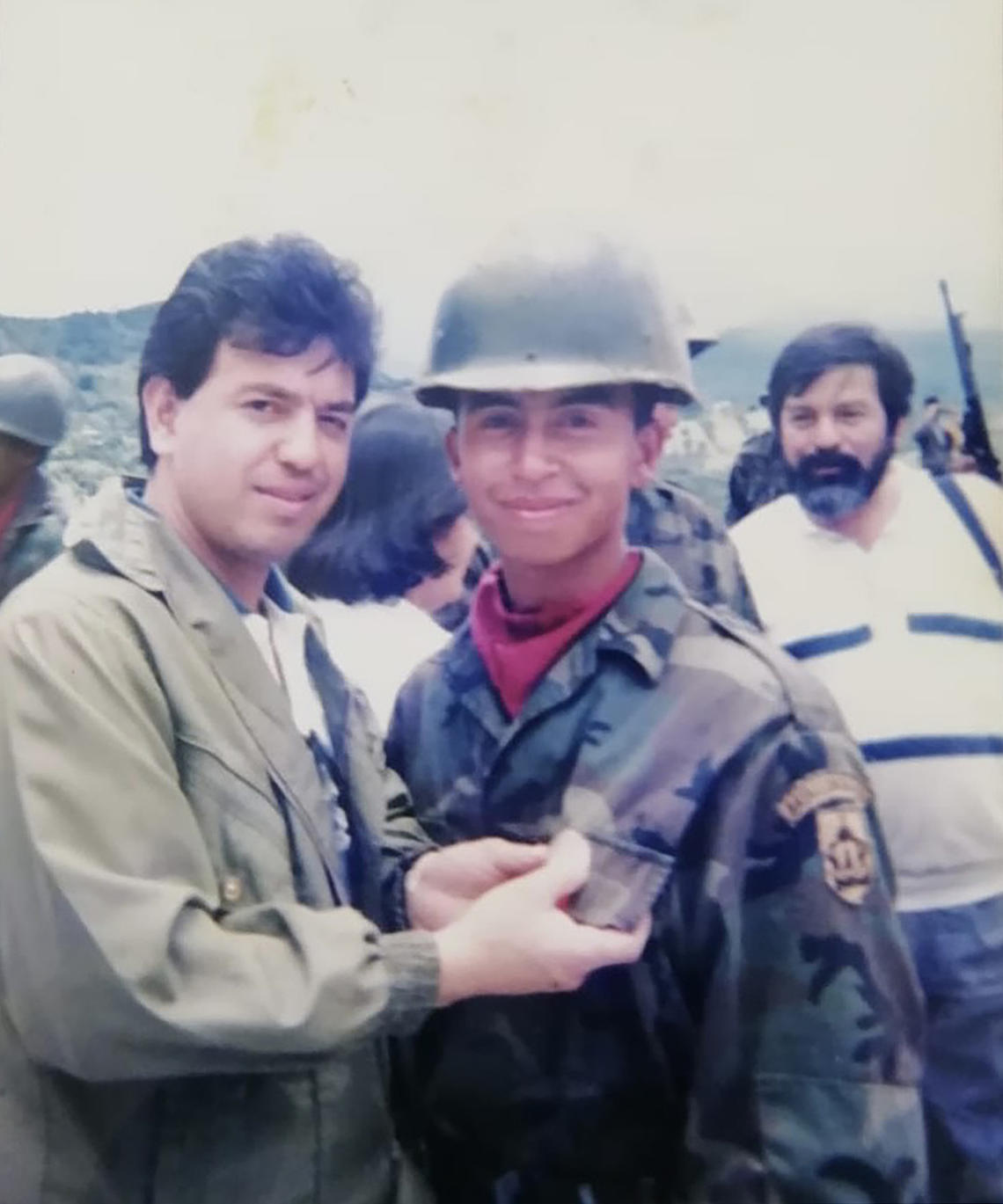April 9, 2021
Exhibition research visualizes Alberta’s diversity by showcasing immigrant veterans

As a first-generation Canadian student born to Somali parents, Lee Hassan observes, “There’s a civilian in every veteran.” What this looks like is complex and revealing, not just for immigrants with military experience now living in Alberta, but for everyone. We’re all continually impacted by the demographics reshaping our province.
To better understand this evolution, UCalgary Founders’ Gallery is preparing to host a dynamic community-based exhibition rooted in storytelling, artefacts and art.
A Uniform Coat of Many Colours: Immigrant Veterans in Alberta is planned for fall 2021/winter 2022 and the exhibition already has historical and contemporary military stories from more than 20 countries across six continents. To further diversify involvement, Founders’ Gallery is working towards an upcoming April 30 deadline for expressions of interest from anyone with relevant content.
Conflict comes in many forms: this project artfully addresses military diversity
The exhibition team takes a broad view of what constitutes a veteran. An individual’s experiences can span not just national armed forces or conscripts, but informal militia, volunteers, guerrilla forces, freedom fighters, child soldiers and medics. Curators have contacted Clarence Wolfleg, himself a military veteran, to seek traditional knowledge and insight before finalizing an essential Indigenous perspective and artistry for the project.
Artefacts and artworks are being gathered from existing collections, including the Anti-Terrorist Operation Museum in Dnipro, Ukraine, alongside loans from veterans and invited artists. SpanicArts, a Calgary-based community group fostering Hispanic culture, is one of many organizations assisting with the project. Director Fredy Rivas was in the Colombian Military and will be creating new artwork embodying his experience as a veteran.

Fredy Rivas, Colombian Army
Courtesy Fredy Rivas
15% of the world’s countries require citizens to perform military service
Although Canada has only twice had conscription, many immigrants arrived as war brides with returning servicemen. Others came during the Cold War, including Kauko Korvela, who came to Alberta in 1960 as an “experiment.” He went from flying skeletal gliders in the Finnish Air Force, to becoming a journeyman printer for the Calgary Herald, then a freelance journalist and TV commentator at the 1988 Winter Olympics. His story highlights not just the fact that most Scandinavian countries and Russia still require military service, but that Alberta’s population has numerous immigrant veterans contributing productively to our society.
Many folks also immigrate during wars or as refugees. Rivqua Goodwin was born in Palestine to a Jewish family and served in the Second World War alongside Arabic Palestinians in the British Women’s Auxiliary Air Force before moving to Edmonton. Highlighting a country still dealing with a refugee crisis is resonant alongside the stories of Vietnamese “Boat People” who settled in Canada, particularly for Hieu Tran, a South Vietnamese Naval Officer who fled by sea and resettled here.
The challenges are many for newcomers, and for those trying to share their stories
Projects such as this provide solid evidence of UCalgary’s commitment to equity, diversity and inclusion, as well as a focus on community engagement through the public face of UCalgary’s Founders’ Gallery and their partnership with The Military Museums. Noting that there are many challenges for newcomers, senior curator Rory Cory says, “We are finding it challenging to engage recent immigrants from Somalia, Sudan, Syria, Afghanistan, Ethiopia, Eritrea, Iran and Iraq.” Additionally, researchers note that many immigrants arrive with few possessions, making it difficult to locate artefacts and art for display.
Additional participants sought through multilingual expression of interest
To promote improved community engagement, the call for expressions of interest has now been translated into Arabic, Dari and Spanish. Exhibition organizers recognize that many military veterans may be dealing with PTSD, language barriers, trust, cramped housing and under-employment. Addressing this, curators offer not just a friendly ear but also the option to become involved anonymously or with a pseudonym.
Through the lens of global migration and conflict, A Uniform Coat of Many Colours: Immigrant Veterans in Alberta will provide opportunities for students, researchers and public visitors to learn more about Alberta from both an historical and contemporary perspective. As Cuban veteran Hebert Poll Gutiérrez says of his art, it can be an “instrument to communicate regardless of race, creed, religion or bank account.”




